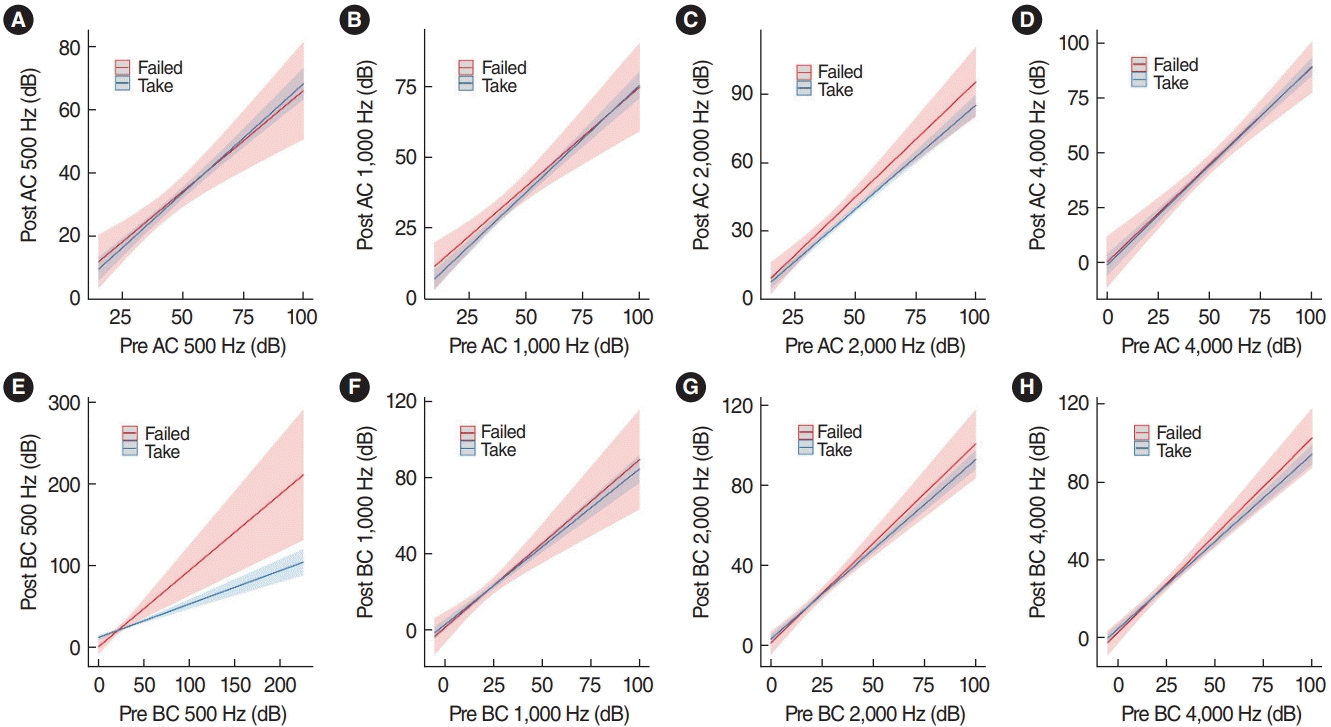1. Marchioni D, Gazzini L, De Rossi S, Di Maro F, Sacchetto L, Carner M, et al. The management of tympanic membrane perforation with endoscopic type I tympanoplasty. Otol Neurotol. 2020; Feb. 41(2):214–21.

2. Choi SW, Kim H, Na HS, Lee JW, Lee S, Oh SJ, et al. Comparison of medial underlay and lateral underlay endoscopic type I tympanoplasty for anterior perforations of the tympanic membrane. Otol Neurotol. 2021; Sep. 42(8):1177–83.

3. Marchioni D, Alicandri-Ciufelli M, Molteni G, Genovese E, Presutti L. Endoscopic tympanoplasty in patients with attic retraction pockets. Laryngoscope. 2010; Sep. 120(9):1847–55.

4. Dundar R, Kulduk E, Soy FK, Aslan M, Hanci D, Muluk NB, et al. Endoscopic versus microscopic approach to type 1 tympanoplasty in children. Int J Pediatr Otorhinolaryngol. 2014; Jul. 78(7):1084–9.

5. Ayache S. Cartilaginous myringoplasty: the endoscopic transcanal procedure. Eur Arch Otorhinolaryngol. 2013; Mar. 270(3):853–60.

6. Furukawa T, Watanabe T, Ito T, Kubota T, Kakehata S. Feasibility and advantages of transcanal endoscopic myringoplasty. Otol Neurotol. 2014; Apr. 35(4):e140–5.

7. Tseng CC, Lai MT, Wu CC, Yuan SP, Ding YF. Endoscopic transcanal myringoplasty for anterior perforations of the tympanic membrane. JAMA Otolaryngol Head Neck Surg. 2016; Nov. 142(11):1088–93.

8. Tseng CC, Lai MT, Wu CC, Yuan SP, Ding YF. Endoscopic transcanal myringoplasty for tympanic perforations: an outpatient minimally invasive procedure. Auris Nasus Larynx. 2018; Jun. 45(3):433–9.

9. Harugop AS, Mudhol RS, Godhi RA. A comparative study of endoscope assisted myringoplasty and micrsoscope assisted myringoplasty. Indian J Otolaryngol Head Neck Surg. 2008; Dec. 60(4):298–302.

10. Anzola JF, Nogueira JF. Endoscopic techniques in tympanoplasty. Otolaryngol Clin North Am. 2016; Oct. 49(5):1253–64.

11. Tseng CC, Lai MT, Wu CC, Yuan SP, Ding YF. Comparison of endoscopic transcanal myringoplasty and endoscopic type I tympanoplasty in repairing medium-sized tympanic perforations. Auris Nasus Larynx. 2017; Dec. 44(6):672–7.

12. Garcia Lde B, Moussalem GF, Andrade JS, Mangussi-Gomes J, Cruz OL, Penido Nde O, et al. Transcanal endoscopic myringoplasty: a case series in a university center. Braz J Otorhinolaryngol. 2016; May-Jun. 82(3):321–5.

13. Choi N, Noh Y, Park W, Lee JJ, Yook S, Choi JE, et al. Comparison of endoscopic tympanoplasty to microscopic tympanoplasty. Clin Exp Otorhinolaryngol. 2017; Mar. 10(1):44–9.

14. Chen CK, Hsu HC, Wang M. Endoscopic tympanoplasty with post-conchal perichondrium in repairing large-sized eardrum perforations. Eur Arch Otorhinolaryngol. 2022; Dec. 279(12):5667–74.

15. Faramarzi M, Bagheri F, Roosta S, Jahangiri R. Application of posterior canal skin flap for the repair of large tympanic membrane perforations. Laryngoscope Investig Otolaryngol. 2022; Feb. 7(2):578–83.

16. Kulduk E, Dundar R, Soy FK, Guler OK, Yukkaldiran A, Iynen I, et al. Treatment of large tympanic membrane perforations: medial to malleus versus lateral to malleus. Indian J Otolaryngol Head Neck Surg. 2015; Jun. 67(2):173–9.

17. Dispenza F, Battaglia AM, Salvago P, Martines F. Determinants of failure in the reconstruction of the tympanic membrane: a case-control study. Iran J Otorhinolaryngol. 2018; Nov. 30(101):341–6.
18. House WF. Myringoplasty. AMA Arch Otolaryngol. 1960; Mar. 71:399–404.

19. Gurgel RK, Jackler RK, Dobie RA, Popelka GR. A new standardized format for reporting hearing outcome in clinical trials. Otolaryngol Head Neck Surg. 2012; Nov. 147(5):803–7.

20. Presutti L, Gioacchini FM, Alicandri-Ciufelli M, Villari D, Marchioni D. Results of endoscopic middle ear surgery for cholesteatoma treatment: a systematic review. Acta Otorhinolaryngol Ital. 2014; Jun. 34(3):153–7.
21. Kozin ED, Gulati S, Kaplan AB, Lehmann AE, Remenschneider AK, Landegger LD, et al. Systematic review of outcomes following observational and operative endoscopic middle ear surgery. Laryngoscope. 2015; May. 125(5):1205–14.

22. Marchioni D, Alicandri-Ciufelli M, Gioacchini FM, Bonali M, Presutti L. Transcanal endoscopic treatment of benign middle ear neoplasms. Eur Arch Otorhinolaryngol. 2013; Nov. 270(12):2997–3004.

23. Presutti L, Marchioni D, Mattioli F, Villari D, Alicandri-Ciufelli M. Endoscopic management of acquired cholesteatoma: our experience. J Otolaryngol Head Neck Surg. 2008; Aug. 37(4):481–7.
24. Marchioni D, Villari D, Alicandri-Ciufelli M, Piccinini A, Presutti L. Endoscopic open technique in patients with middle ear cholesteatoma. Eur Arch Otorhinolaryngol. 2011; Nov. 268(11):1557–63.

25. Botti C, Fermi M, Amorosa L, Ghidini A, Bianchin G, Presutti L, et al. Cochlear function after type-1 tympanoplasty: endoscopic versus microscopic approach, a comparative study. Eur Arch Otorhinolaryngol. 2020; Feb. 277(2):361–6.

26. Tuz M, Dogru H, Uygur K, Gedikli O. Improvement in bone conduction threshold after tympanoplasty. Otolaryngol Head Neck Surg. 2000; Dec. 123(6):775–8.

27. Vartiainen E, Karjalainen S. Factors influencing sensorineural hearing loss in chronic otitis media. Am J Otolaryngol. 1987; Jan-Feb. 8(1):13–5.

28. Paparella MM, Morizono T, Le CT, Mancini F, Sipila P, Choo YB, et al. Sensorineural hearing loss in otitis media. Ann Otol Rhinol Laryngol. 1984; Nov-Dec. 93(6 Pt 1):623–9.

29. Dumich PS, Harner SG. Cochlear function in chronic otitis media. Laryngoscope. 1983; May. 93(5):583–6.






 PDF
PDF Citation
Citation Print
Print



 XML Download
XML Download